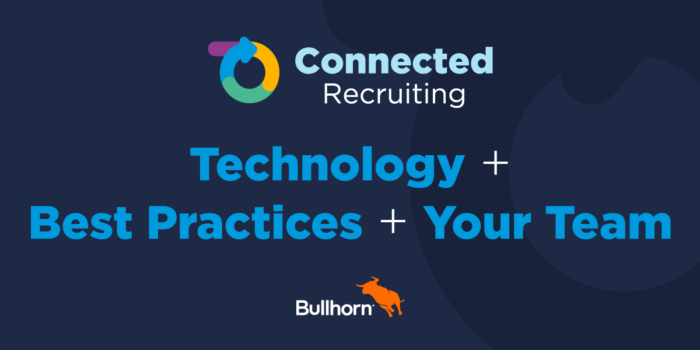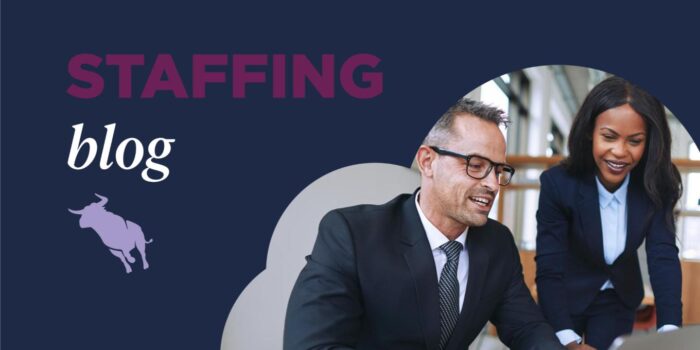In a candidate-short market, everyone is on the search for talent. According to research from…

Why M&A Activity Is on the Rise – and How Staffing Firms Can Benefit

From an M&A perspective, 2022 is on track to be one of the busiest years in over five years, with estimates of up to 140 transactions in the staffing and recruitment industry by the end of the year.
But I haven’t needed data to tell me M&A is a hot trend: merging clients is at the center of many of my consulting projects at TechRuum, and I have a personal passion for identifying ways to expedite the post-merge process.
I found further confirmation that this was a hot topic at our Engage Boston event earlier this year, as I spoke with customers and listened to the panel discussion on “The Evolving Staffing M&A Landscape and Preparing for Your Next Move.” The panelists shared insights into the process of identifying a company to acquire, tips to go about the acquisition, and critical success factors in post-sale merge.
Moderated by Peter Linas, Chief People Officer & EVP, Corporate Development & International at TechRuum, the panel included a mix of investors and staffing leaders:
- David Schwartz, Senior Managing Director, Blackstone
- Gregory Netland, The Netland Group
- Dustin Abbs, Director of Corporate Development, The Planet Group
- Brian Waller, Chief Executive Officer and Co-Founder, Vaco
Here’s what they had to say about this year’s trends in staffing mergers and acquisitions.
Why the increase in M&A activity?
Peter Linas kicked things off by asking the panel their insight on the recent increase in M&A transactions in the staffing industry. “The shift in the industry from being historically surge-driven and low-skilled labor to a strategic approach with higher-scale labor on a contingent basis has made the industry more scalable and investable from a private equity perspective. That has driven a lot of M&A activity,” David Schwartz noted.
Dustin Abbs added, “There is a strong pipeline and an appetite to acquire. As interest rates rise, PE firms will be more protective of their balance sheet and things will slow down in the next year or so.”
Gregory Netland really summed up things on the overall reasons for the increase: “The staffing industry has proven that it is more resilient. During the pandemic, I learned that everyone has a playbook. Firms were able to scale down, leverage their tools, and scale back up as needed.”
What drives organizational value?
The conversation pivoted to some interesting recommendations from the panel on ensuring the future value of your organization and ways to make your organization more attractive to buyers.
David highlighted three areas to work towards for high valuation: the level of organic growth; high, sustainable margins; and having a diversified value proposition. Adding new accounts and attaining deeper penetration into larger accounts are two ways to demonstrate the kind of growth investors are looking for.
I think these really hit the nail on the head, as one of the key drivers to increased staffing has been the staffing industry’s reduction in overall volatility, which is directly connected to diversifying your offerings, expanding your portfolio, and finding ways to do more with less.
On that same topic, both David and Brian Waller attributed value to people, process, and technology. David commented, “Having a good tech stack helps from an organic perspective and also from an acquisition perspective.”
Gregory had some good insight on your process and people: “Setting up a good recruitment and talent engine to bring good people in is essential. Get them up to speed and retain them.”
In addition to having a well-defined tech stack, a strong delivery engine, and staffing model, Dustin also brought up diversification of an organization’s portfolio of business: “Geography, industry, diversity in your employees. It provides resiliency through ups and downs and helps with valuation.”
As my world at TechRuum is focused on helping clients do more with less, this was definitely a big takeaway on how technology will drive increased margins. But that isn’t the only aspect. The new technology must be paired with a strategic organizational structure and strong processes that ensure your top billers are focused on efficiency and aren’t spending too much time on administrative or repetitive tasks.
What are some key takeaways from past deals?
As expected, some of the most insightful parts of the panel were lessons learned from past deals. The common thread was communication; all panelists agreed it was important to loop people in as early as possible while balancing the due diligence process.
Gregory highlighted, “There is this instinct to keep things quiet, but that underestimates people’s intelligence in a way. Be able to communicate clearly what is happening. Focus on staff communication, and help them focus on giving everything a chance.”
The final area the panel touched on was about the post-sale experience and staff retention. Gregory had a few more key points around communication, being sure to include your team in key decisions, and keeping a close eye on compensation. He also touched on the importance of showing employees their career path options.
What else helps post-sale processes go more smoothly? I would be remiss if I didn’t offer my own perspective of what I have seen over the past 18 months of helping numerous companies merge. The key factor to success is top-down leadership alignment. It is crucial for senior leadership to agree on a go-forward way of doing business.
This is true for many aspects of the business, from brand planning (which Brian noted as a frequently overlooked item) to organizational structure and standardized rules of engagement with similar clients and candidates. Once leaders agree on how to approach these challenges, kicking off and executing a merge project is so much smoother, while projects in which these items weren’t discussed can take double the time.
Overall, the panelists expect M&A activity to keep increasing, and there were some comments on possible market shifts. Whatever changes lie ahead, the insights shared above should help smooth the transition for all parties involved.
Source link


Comments (0)